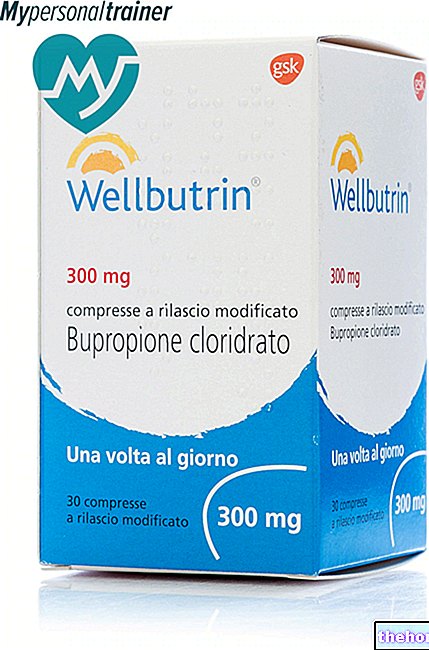Active ingredients: Timolol
TIMOGEL 1 mg / g eye gel in single-dose container
Indications Why is Timogel used? What is it for?
This medicine is a beta blocker administered by the eye.
It is used for the treatment of certain types of eye diseases related to intraocular hypertension (glaucoma and ocular hypertension).
Contraindications When Timogel should not be used
Do not use TIMOGEL eye gel in single-dose container
- if you are allergic to timolol maleate, other beta blockers or any of the other ingredients of this medicine (listed in section 6),
- if you have or have had in the past breathing problems such as asthma, severe chronic obstructive bronchitis (severe lung disease which can cause shortness of breath, difficulty in breathing and / or long lasting cough).
- If you have a slow heart rate, heart failure or heart rhythm disturbances (irregular heartbeats)
- in case of: untreated pheochromocytoma (excessive production of a hormone causing severe arterial hypertension),
- in case of corneal dystrophies (degenerative disease of the cornea).
Precautions for use What you need to know before you take Timogel
Talk to your doctor, pharmacist or nurse before using TIMOGEL
Do not stop therapy suddenly without your doctor's advice.
Do not inject, do not swallow.
If you use TIMOGEL you should have regular intraocular pressure and corneal checks.
Before using this medicine, tell your doctor if you have or have had in the past:
- coronary heart disease (symptoms may include chest pain or tightness, wheezing or choking), heart failure, low blood pressure
- heart rhythm disturbances, as well as slow heart rate,
- breathing problems, asthma or chronic obstructive pulmonary disease (lung disease which can cause shortness of breath, difficulty in breathing and / or long-lasting cough),
- problems with peripheral arterial circulation (such as Raynaud's disease or Raynaud's syndrome)
- in diabetes, timolol maleate can mask the signs and symptoms of low blood sugar,
- timolol maleate can mask signs and symptoms of overactive thyroid gland,
- pheochromocytoma,
- psoriasis,
- corneal disease
- metabolic disease
Precautions for the use of contact lenses
- avoid using contact lenses during treatment as fewer tears are secreted, this is generally related to the use of beta-blocker medicines.
Tell your doctor before undergoing an operation that you are taking TIMOGEL, as timolol maleate can change the effects of some medicines used during anesthesia.
Interactions Which drugs or foods can modify the effect of Timogel
If your doctor has prescribed any other type of eye drops for you, you should instill these eye drops 15 minutes before taking TIMOGEL.
TIMOGEL may affect or be affected by other medicines you are using, including other eye drops for the treatment of glaucoma. Tell your doctor if you are using or intend to use medicines to lower blood pressure, heart medicines or medicines to treat diabetes, quinidine (used to treat heart conditions and some types of malaria), antidepressants known as fluoxetine and paroxetine.
Tell your doctor or pharmacist if you are taking or have recently taken or might take other medicines.
Warnings It is important to know that:
Pregnancy and breastfeeding
Do not use TIMOGEL if you are pregnant unless your doctor considers it necessary.
Do not use TIMOGEL if you are breastfeeding. Timolol maleate can be excreted in milk.
Ask your doctor for advice before taking any medicine while breastfeeding.
Driving and using machines
Transient blurring of vision may occur following ocular administration of TIMOGEL. Wait until your vision has recovered before driving or using machines. TIMOGEL can also cause other side effects (dizziness and fatigue) which are likely to affect the ability to drive or use machines. If you have any concerns, consult your doctor.
Sport
The active ingredient in this medicine can cause positive doping tests.
Dosage and method of use How to use Timogel: Dosage
Always use this medicine exactly following your doctor's instructions. If in doubt, you should consult your doctor or pharmacist.
Dosage
Adults
The usual dose is one drop in the affected eye (s) once a day, in the morning. A single single-dose container contains enough gel to treat both eyes.
Children and adolescents
There is no experience in children and adolescents. The use of this eye gel is therefore not recommended in such patients.
Elderly patients
No dosage adjustment is necessary.
Frequency of administration
Apply one drop to the affected eye (s) once a day, in the morning.
Method of administration
This medicine is to be administered into the eye (ophthalmic use).
To be used only once.
- wash your hands carefully before using your eye gel;
- shake the container vigorously, with the opening downwards, before applying a drop;
- avoid contact of the tip of the container with the eye or eyelids;
- gently lower the lower lid of the affected eye while looking up, and instill the drop in the eye;
- after using TIMOGEL, press a finger in the corner of the eye, near the nose for 2 minutes. This helps prevent timolol maleate from spreading to the rest of the body
- discard the single-dose container after use. Do not keep the container for further use.
If you forget to use TIMOGEL
Do not use a double dose to make up for a forgotten dose. Instill the missed dose as soon as possible. However, if it is almost time to apply the next dose, simply skip the missed dose.
If you stop taking TIMOGEL
The pressure inside your eye can increase and damage your vision.
Do not stop therapy suddenly without asking your doctor for advice.
If you have any further questions on the use of TIMOGEL, ask your doctor or pharmacist.
Overdose What to do if you have taken too much Timogel
If you use more TIMOGEL than you should
Among other effects, you may feel dizzy, or you may have difficulty breathing or have a feeling that your heart rate has slowed.
CHECK IMMEDIATELY WITH YOUR DOCTOR OR PHARMACIST.
Side Effects What are the side effects of Timogel
Like all medicines, TIMOGEL eye gel in single-dose container can cause side effects, although not everyone gets them.
You can usually continue taking the gel, unless the effects are severe. If you are concerned, ask your doctor or pharmacist. Do not stop using TIMOGEL without talking to your doctor.
As with other medicines applied to the eye, timolol maleate is absorbed into the blood. This may cause undesirable effects similar to those seen with beta-blocking agents taken "intravenously" and / or "orally".
The incidence of side effects after topical ophthalmic administration is lower than when medicines are, for example, taken by mouth or injected.
The listed side effects include reactions seen within the class of beta-blockers used to treat eye conditions:
- Systemic allergic reactions which include generalized swelling under the skin (which can occur in areas such as the face and limbs, and can obstruct the airways, causing difficulty in swallowing or breathing), hives (or itchy rash), localized rash and generalized, itching, severe life threatening from sudden allergic reaction.
- Low blood glucose levels
- Sleep disturbances (insomnia), depression, nightmares, memory loss
- Fainting, stroke, reduced blood supply to the brain, worsening of the signs and symptoms of myasthenia gravis (muscle disorder), dizziness, unusual sensations (such as pins and needles) and headache.
- Signs and symptoms of eye irritation (for example, burning, stinging, itching, tearing, redness), conjunctival redness, conjunctivitis, inflammation of the eyelid, inflammation of the cornea, blurred vision and detachment of the layer under the retina that contains the blood vessels to following filter surgery which can cause visual disturbances, reduced corneal sensitivity, dry eyes, corneal erosion (damage to the anterior layer of the eyeball), lowering of the upper eyelid (making the eye half closed), double vision, changes of refraction (sometimes due to discontinuation of myotic drop therapy).
- Slow heart rate, chest pain, palpitations, edema (fluid buildup), changes in the rhythm or speed of the heartbeat, congestive heart failure (heart disease, with shortness of breath and swelling of the feet and legs due to accumulation fluid), heart rhythm disturbance, heart attack, heart failure, leg cramps and / or leg pain when walking (claudication)
- Low blood pressure, Raynaud's phenomenon, cold hands and feet.
- Constriction of the pulmonary airways (predominantly in patients with pre-existing diseases), difficulty in breathing, cough.
- Taste disturbances, nausea, indigestion, diarrhea, dry mouth, abdominal pain, vomiting.
- Hair loss, rash with a silvery white appearance (psoriasiform rash) or worsening of psoriasis, skin rash.
- Muscle pain not caused by exercise, diffuse lupus erythematosus.
- Sexual dysfunction, decreased libido, impotence.
- Muscle weakness / fatigue.
- Positive results for antinuclear antibodies.
If any of the side effects occur, please tell your doctor, pharmacist or nurse. This includes any side effects not listed in this leaflet.
Reporting of side effects
If you get any side effects, talk to your doctor, pharmacist or nurse. This includes possible side effects not listed in this leaflet. You can also report side effects directly via the national reporting system at www. Agenziafarmaco.gov.it/it/responsabili. By reporting side effects you can help provide more information on the safety of this medicine.
Expiry and Retention
Keep this medicine out of the sight and reach of children.
Do not use this medicine after the expiry date which is stated on the carton, pouch and single-dose container after EXP. The expiry date refers to the last day of the month.
Keep the single-dose containers inside the pouch and the outer container to keep them away from light.
Use the single-dose container immediately after opening and dispose of it after use.
After opening the pouch: use the single-dose containers within 1 month.
Do not throw medicines down the drain. Ask your pharmacist how to dispose of medicines you no longer use. These measures will help protect the environment.
Deadline "> Other information
What TIMOGEL contains
- The active ingredient is timolol, 1 g of gel contains 1 mg of timolol in the form of timolol maleate.
- The other ingredients are sorbitol, polyvinyl alcohol, 974 P carbomer, sodium acetate trihydrate, lysine monohydrate, water for injections.
Description of the appearance of TIMOGEL and contents of the pack
TIMOGEL is an opalescent, colorless to slightly yellow ophthalmic gel, presented in single-dose containers packed in a bag of 10 units, each single-dose container contains 0.4 g of product.
One pack contains 30 (3 x 10) or 90 (9x10) single-dose containers.
Not all pack sizes are marketed.
Source Package Leaflet: AIFA (Italian Medicines Agency). Content published in January 2016. The information present may not be up-to-date.
To have access to the most up-to-date version, it is advisable to access the AIFA (Italian Medicines Agency) website. Disclaimer and useful information.
01.0 NAME OF THE MEDICINAL PRODUCT -
TIMOGEL 1 MG / G OPHTHALMIC GEL IN SINGLE-DOSE CONTAINER
02.0 QUALITATIVE AND QUANTITATIVE COMPOSITION -
1 g of gel contains 1 mg of timolol as timolol maleate.
For the full list of excipients, see section 6.1.
03.0 PHARMACEUTICAL FORM -
Eye gel in single-dose container.
Opalescent, colorless to slightly pale yellow gel.
04.0 CLINICAL INFORMATION -
04.1 Therapeutic indications -
Reduction of elevated intraocular pressure in patients with:
• ocular hypertension,
• chronic open angle glaucoma.
04.2 Posology and method of administration -
Ophthalmic use.
Adults
The recommended dosage regimen is 1 drop of TIMOGEL 1 mg / g in the affected eye (s) once daily in the morning.
Senior citizens
There is a great deal of experience with the use of timolol eye drops in elderly patients. The recommended dosage above reflects the clinical data derived from this experience.
Children and adolescents
There is no experience with the use of TIMOGEL 1 mg / g in children and adolescents. This eye gel is therefore not recommended in such patients.
If the ophthalmologist deems it necessary, TIMOGEL 1 mg / g can be combined with one or more antiglaucoma treatments (local and / or systemic administration).
However, the combination of two beta-blocker eye drops is not recommended (see section 4.4).
The other eye drops should be administered at least 15 minutes before TIMOGEL 1 mg / g. The eye gel should be the last dressing instilled.
However, the response to TIMOGEL 1 mg / g may require several weeks of treatment to stabilize intraocular pressure, therefore therapy monitoring should include assessment of intraocular pressure after a treatment period of approximately four weeks.
Method of administration
Timolol eye gel should be instilled into the conjunctival sac.
A single single-dose container contains enough gel to treat both eyes.
To be used only once
Patients should be instructed ad :
• avoid contact between the tip of the container and the eye or eyelids,
• use the eye gel immediately after first opening the single-dose container and discard the single-dose after use.
By performing nasolacrimal occlusion or closing the eyelids for 2 minutes, systemic absorption is reduced. This can lead to a decrease in systemic side effects and an increase in local activity.
Replacement of previous therapy :
When TIMOGEL 1 mg / g is used to replace other glaucoma eye drops, the latter should be discontinued after finishing a full daily dose, and TIMOGEL 1 mg / g should be started the next day with a dose of one drop in the dose. "affected eye (s) once a day, in the morning.
If you intend to replace a combination of glaucoma treatments with TIMOGEL 1 mg / g only one medicine should be discontinued at a time.
If an anti-glaucoma medicine to be replaced is not a beta-blocker eye drops, you should continue with that medicine and add one drop of TIMOGEL 1 mg / g in the affected eye (s) once a day. From the next day, you must stop completely. the administration of the antiglaucoma medicine previously used.
When TIMOGEL 1 mg / g is used as a substitute for miotic eye drops, evaluation of ocular refraction may be necessary when the effect of the miotic disappears.
Prescribing should be associated with intraocular pressure monitoring, particularly at the start of treatment.
04.3 Contraindications -
• Hypersensitivity to the active substance (timolol maleate), or to any of the excipients listed in section 6.1,
• reactive airway disease including bronchial asthma, or a history of bronchial asthma, or severe chronic obstructive pulmonary disease,
• sinus bradycardia, sick sinus syndrome, sino-atrial block, 2nd and 3rd degree not controlled with a pacemaker,
• overt heart failure, cariogenic shock,
• untreated pheochromocytoma,
• corneal dystrophies.
04.4 Special warnings and appropriate precautions for use -
As with other topically applied ophthalmic agents, timolol maleate is absorbed systemically. Due to the beta-adrenergic component, timolol maleate, the same types of cardiovascular, pulmonary and other adverse reactions seen with systemic beta-blockers can occur.
The incidence of systemic adverse reactions after topical ophthalmic administration is lower than that due to systemic administration. To reduce systemic absorption see section 4.2.
As with any glaucoma treatment, it is recommended that intraocular pressure and corneal pressure be measured regularly.
Cardiac pathologies :
In patients with cardiovascular disease (e.g. coronary artery disease, Prinzmetal's angina and heart failure) and hypotension, beta-blocker therapy should be carefully considered and therapy with other active substances should be considered. Patients with cardiovascular disease should be monitored for signs of worsening of these conditions or for adverse reactions.
Due to their negative effect on conduction time, beta-blockers should only be administered with caution to patients with first degree heart block.
The dosage should be reduced if the heart rate falls below 50-55 beats per minute at rest, and if the patient experiences symptoms related to bradycardia.
Beta blockers may increase the risk of rebound hypertension.
Vascular pathologies
Patients with severe peripheral circulatory disorders / diseases (i.e. severe forms of Raynaud's disease or Raynaud's syndrome) should be treated with caution.
Pheochromocytoma under treatment
These patients should not take beta-blocking medicinal products without receiving concomitant treatment with alpha-adrenergic blocking agents.
Respiratory pathologies
Respiratory reactions, including death from bronchospasm in patients with asthma, have been reported following administration of some ophthalmic beta-blockers.
TIMOGEL should be used with caution in patients with mild / moderate chronic obstructive pulmonary disease (COPD) and only if the potential benefit outweighs the potential risk.
Hypoglycemia / diabetes
Beta-blockers should be administered with caution in patients subject to spontaneous hypoglycaemia or in patients with labile diabetes, as beta-blockers may mask the signs and symptoms of acute hypoglycaemia.
Beta blockers can also mask the signs of hyperthyroidism.
Metabolic diseases
The medicinal product should be administered with caution in patients with metabolic acidosis.
Diseases of the cornea
Ophthalmic beta-blockers can induce dry eyes. Patients with corneal disease should be treated with caution.
Contact lens wearers
There is a risk of developing contact lens intolerance due to the reduced tear secretion caused by the beta blocker.
Timolol eye gel has not been studied in patients with contact lenses, and therefore the use of contact lenses should be avoided during treatment with TIMOGEL.
Other beta-blocking agents
The effect on intra-ocular pressure or known effects of systemic beta-blockade may be potentiated when timolol maleate is administered to patients already receiving a systemic beta-blocking agent. The response of these patients should be carefully monitored. The use of two topical beta-adrenergic blocking agents is not recommended (see section 4.5).
Anaphylactic reactions
During treatment with beta-blockers, patients with a history of atopy or severe anaphylactic reactions to various allergens may be more reactive to repeated contact with these allergens and not respond to the dose of adrenaline used to treat anaphylactic reactions.
Detachment of the choroid
Choroid detachment has been reported following administration of aqueous humor reducing therapy (eg timolol, acetazolamide) following filtration procedure.
Psoriasis
Beta-blockers have been shown to aggravate psoriasis, so the use of these drugs in this condition should be carefully considered.
Discontinuation of therapy
As with systemic beta-blockers, if discontinuation of ophthalmic timolol therapy is required in patients with coronary artery disease, this should be done gradually.
Elderly patients, renal and / or hepatic insufficiency.
When these medicinal products are administered orally in these high-risk individuals, dosage adjustment is often required.
Surgical anesthesia
Ophthalmic preparations containing beta-blockers may block the systemic effects of beta agonists, such as adrenaline.
The anesthetist should be advised if the patient is being treated with timolol maleate.
Sportsmen: Sportspeople should be warned that this medicine contains an active ingredient which may cause positive doping tests.
04.5 Interactions with other medicinal products and other forms of interaction -
No specific drug interaction studies have been performed with timolol maleate.
Although the amount of beta-blockers passing into the systemic circulation after ocular instillation is low, the risk of drug interactions remains present.
The interactions observed with beta-blockers taken systemically should therefore be taken into account.
The potential for additive effects such as hypotension and / or marked bradycardia exists when an ophthalmic beta-blocker solution is administered in combination with oral calcium antagonists, beta-adrenergic blocking agents, antiarrhythmics (including amiodarone), digitalis glycosides, parasympathomimetics, guanethidine .
Enhanced systemic beta-blockade (e.g. decreased heart rate, depression) has been reported during combined treatment with CYP2D6 inhibitors (e.g. quinidine, fluoxetine, paroxetine) and timolol.
Occasionally, mydriasis resulting from concomitant use of ophthalmic beta-blockers and adrenaline (epinephrine) has been reported.
Combinations which are not recommended (see section 4.4)
+ Bepridil
Heart rhythm disturbances (excessive bradycardia, sinus arrest), sino-atrial and atrio-ventricular conduction disturbances and increased risk of ventricular rhythm disturbances (torsades de pointes) as well as heart failure.
This combination requires close clinical and ECG monitoring, especially in elderly subjects or those starting treatment.
+ Diltiazem
Heart rhythm disturbances (excessive bradycardia, sinus arrest), sino-atrial and atrio-ventricular conduction disturbances and heart failure.
This combination requires close clinical and ECG monitoring, especially in elderly subjects or those starting treatment.
+ Verapamil
Heart rhythm disturbances (excessive bradycardia, sinus arrest), sino-atrial and atrio-ventricular conduction disturbances and heart failure.
This combination requires close clinical and ECG monitoring, especially in elderly subjects or those starting treatment.
+ Fingolimod
The potentiation of bradycardia effects can have fatal consequences. Beta - blockers are at greater risk because they prevent the adrenergic compensation mechanism.
Clinical monitoring and continuous ECG during 24 hours after the first dose.
Combinations that require precautions for use
+ Amiodarone
Heart rhythm and conduction disorders (suppression of sympathetic compensatory mechanisms).
Clinical monitoring and ECG are recommended.
+ Class I antiarrhythmics (excluding lidocaine)
Disorders of contractility, heart rhythm and conduction (suppression of sympathetic compensatory mechanisms).
Clinical monitoring and ECG are recommended.
+ Halogenated volatile anesthetic agents
Reduction of compensatory cardiovascular mechanisms by beta-blockers. Beta - adrenergic inhibition can be counteracted by beta - sympathomimetics during surgery.
As a general rule, do not discontinue beta-blocker therapy and, in any case, avoid abrupt discontinuation. The anesthetist must be informed of this treatment.
+ Baclofen
Increased risk of hypotension, especially orthostatic.
Blood pressure monitoring and, if necessary, adjustment of the antihypertensive dosage.
+ Anti - central hypertensive
Significant increase in blood pressure in the event of sudden discontinuation of treatment with a central anti-hypertensive. Avoid abrupt discontinuation of treatment with a central anti - hypertensive. Clinical monitoring.
+ Insulin, oral hypoglycemic agents; glinides; gliptins
All beta-blockers can mask some symptoms of hypoglycemia: palpitations and tachycardia.
Warn the patient and, particularly at the start of treatment, the patient's self-monitoring of blood glucose should be increased.
+ Lidocaine
Concurrent intravenous administration of lidocaine: increase in plasma concentrations of lidocaine with the possibility of adverse neurological and cardiac side effects (reduction of hepatic clearance of lidocaine).
Clinical and ECG monitoring and possibly measurement of lidocaine plasma concentrations during combination therapy and after the beta-blocker has been removed.
Adjustment of lidocaine dosage if necessary.
+ Drugs that can cause torsades de pointes
Increased risk of ventricular arrhythmia, particularly torsades de pointes.
Clinical monitoring and ECG are recommended.
+ Propafenone
Disorders of contractility, heart rhythm and conduction (suppression of sympathetic compensatory mechanisms).
Clinical monitoring and ECG are recommended.
Combinations that need to be considered
+ Alpha - blockers intended for urological use; Anti - hypertensive alpha - blockers
Potentiation of the hypotensive effect. Increased risk of orthostatic hypotension.
+ Amifostina
Increased risk of hypotension, especially orthostatic.
+ Imipramine antidepressants
Increased risk of hypotension, especially orthostatic.
+ Neuroleptics
Increased risk of hypotension, especially orthostatic. Vasodilator effect and risk of hypotension, especially orthostatic (additive effect).
+ Non-steroidal anti-inflammatory drugs
Reduction of the antihypertensive effect (inhibition of vasodilating prostaglandins by non-steroidal anti-inflammatory drugs and water and salt retention by phenylbutazone).
+ Other bradycardic drugs
Risk of excessive bradycardia (additive effect).
+ Dihydropyridines
Hypotension, heart failure in patients with latent or uncontrolled heart failure (further negative inotropic effects). Furthermore, the beta-blocker can minimize the sympathetic reflex reaction, which comes into play in the event of excessive hemodynamic repercussions.
+ Dipyridamole
With dipyridamole intravenously: potentiation of the anti-hypertensive effect.
+ Pilocarpine (for systemic use)
Risk of excessive bradycardia (additive bradycardic effects).
+ Nitro derivatives and the like
Increased risk of hypotension, especially orthostatic.
04.6 Pregnancy and breastfeeding -
Pregnancy
There are no adequate data for the use of timolol maleate in pregnant women. Timolol maleate should not be used during pregnancy unless clearly necessary. To reduce systemic absorption, see section 4.2.
Epidemiological studies have not revealed malformative effects but show a risk of intrauterine growth retardation when beta-blockers are administered orally. Furthermore, signs and symptoms of beta blockade (e.g. bradycardia, hypotension, breathing problems and hypoglycaemia) have been observed in the neonate when beta blockers have been administered until delivery. If TIMOGEL is administered until delivery, the neonate should be carefully monitored during the first days of life.
Feeding time
Beta-blockers are excreted in breast milk. However, at therapeutic doses of timolol maleate in eye drops, the amount present in breast milk is not sufficient to produce clinical symptoms of beta-blockade in the newborn. To reduce systemic absorption see section 4.2.
04.7 Effects on ability to drive and use machines -
TIMOGEL has minor effects on the ability to drive or use machines.
No studies on the ability to drive and use machines have been performed. When driving vehicles or using different machines, it should be taken into account that visual disturbances may occasionally occur including refractive defects, diplopia, ptosis, frequent episodes blurring of vision, mild and transient and occasionally episodes of dizziness or fatigue.
04.8 Undesirable effects -
As with other topically applied ophthalmic drugs, timolol maleate is absorbed into the systemic circulation. This may cause similar undesirable effects to those seen with systemic beta-blocking agents. The incidence of systemic adverse reactions following topical ophthalmic administration is lower than that relating to systemic administration. Adverse reactions listed include reactions seen within the class of ophthalmic beta-blockers.
Disorders of the immune system :
Systemic allergic reactions include angioedema, urticaria, localized and generalized rash, pruritus, anaphylactic reactions.
Metabolism and nutrition disorders :
Hypoglycemia.
Psychiatric disorders :
Insomnia, depression, nightmares, memory loss.
Disorders of the nervous system :
Syncope, cerebrovascular accident, cerebral ischaemia, worsening of the signs and symptoms of myasthenia gravis, dizziness, paraesthesia and headache.
Visual disturbances :
Signs and symptoms of eye irritation (eg burning, itching, tearing, redness), blepharitis, conjunctival hyperaemia, conjunctivitis, keratitis, blurred vision and choroid detachment after filter surgery (see 4.4 Special warnings and precautions for use), decreased corneal sensitivity, dry eyes, ptosis, corneal erosion, diplopia.
Cardiac pathologies :
Bradycardia, chest pain, palpitations, edema, arrhythmias, congestive heart failure, atrioventricular block, cardiac arrest, heart failure.
Vascular pathologies :
Hypotension, Raynaud's phenomenon, cold hands and feet.
Respiratory, thoracic and mediastinal disorders :
Bronchospasm (predominantly in patients with pre-existing bronchospasm), dyspnoea, cough.
Gastrointestinal disorders :
Dysgeusia, nausea, dyspepsia, diarrhea, dry mouth, abdominal pain, vomiting.
Disorders of the skin and subcutaneous tissue :
Alopecia, psoriasiform rash or exacerbation of psoriasis, skin rash.
Disorders of connective tissue and skeletal muscle :
Myalgia, systemic lupus erythematosus.
Diseases of the reproductive system and breast :
Sexual dysfunction, decreased libido, impotence.
General disorders and administration site conditions :
Asthenia / fatigue.
Investigations :
Positive antinuclear antibodies.
Reporting of suspected adverse reactions
Reporting of suspected adverse reactions occurring after authorization of the medicinal product is important as it allows continuous monitoring of the benefit / risk balance of the medicinal product. Healthcare professionals are asked to report any suspected adverse reactions via the national reporting system. "address www.agenziafarmaco.gov.it/it/responsabili.
04.9 Overdose -
Although systemic absorption of beta-blockers after ocular instillation is minimal, the possible risk of overdose must be taken into account. Symptoms and therapeutic measures to be taken in case of overdose are similar to those taken for beta-blockers administered to systemically.
05.0 PHARMACOLOGICAL PROPERTIES -
05.1 "Pharmacodynamic properties -
Pharmacotherapeutic group: ANTIGLAUCOMA AND MIOTIC PREPARATIONS; Beta-blocking agents
ATC code: S01ED01
Systemic effects :
timolol can be characterized by three pharmacological properties:
• non-cardioselective beta-blocker,
• partial agonist potential [moderate intrinsic sympathomimetic activity (ISA)],
• non-significant membrane stabilizing effect (local anesthetic or quinidine-like effect).
Ocular Effects :
• Timolol maleate-based ophthalmic gel reduces intraocular pressure, both in the presence and absence of glaucoma;
• the effect is observable within 20 minutes after instillation, reaches its maximum within 1-2 hours and is still present after 24 hours;
• there is no effect on pupil diameter or visual acuity.
05.2 "Pharmacokinetic properties -
Timolol 1 mg / g eye gel is a preservative-free formulation.
Insignificant systemic exposure was observed in patients treated with Timolol 1 mg / g eye gel, administered once daily.
Data from a recent comparative pharmacokinetic study demonstrated that plasma concentrations are generally below the quantitative detection limit (LOQ = 0.146 ng / mL).
05.3 Preclinical safety data -
None of the mutagenicity studies conducted in vivo and in vitro on timolol produced no evidence of mutagenic effects. Carcinogenic potential was observed in animals at exposure levels higher than those observed in clinical practice during treatment with TIMOGEL 1 mg / g.
Reproductive toxicity studies did not show teratogenic effects in mice, rats and rabbits. In rats, a delay in ossification was observed with exposure levels much higher than those observed in clinical practice during treatment with TIMOGEL 1 mg / g. No effects on fertility were observed in rats.
Single or repeated applications of TIMOGEL 1 mg / g for 28 days produced neither local nor systemic intolerance, nor local anesthetic effect in rabbits.
06.0 PHARMACEUTICAL INFORMATION -
06.1 Excipients -
Sorbitol,
Polyvinyl alcohol,
Carbomer 974 P,
Sodium acetate trihydrate,
Lysine monohydrate,
Water for injections.
06.2 Incompatibility "-
Not relevant.
06.3 Period of validity "-
30 months.
After opening the single-dose container: use immediately and discard the single-dose container after use.
After opening the pouch: use the single-dose containers within 1 month.
06.4 Special precautions for storage -
Keep the single-dose containers inside the bag and the outer container to keep them away from light.
06.5 Nature of the immediate packaging and contents of the package -
10 single-dose containers (PEBD) containing 0.4 g of gel are packed in bags (paper / aluminum), each box contains 3 bags.
One pack contains 30 (3x10) single-dose containers.
06.6 Instructions for use and handling -
No special instructions.
07.0 HOLDER OF THE "MARKETING AUTHORIZATION" -
Laboratoires THEA S.A.
12, rue Louis Blériot
63017 CLERMONT-FERRAND CEDEX 2
FRANCE
08.0 MARKETING AUTHORIZATION NUMBER -
1 mg / g ophthalmic gel 30 single-dose containers AIC N ° 037700010
09.0 DATE OF FIRST AUTHORIZATION OR RENEWAL OF THE AUTHORIZATION -
November 2007
10.0 DATE OF REVISION OF THE TEXT -
December 2014
















.jpg)











